
Roots
Feel the whisper of ages past on your scalp, the memory held within each coil and kink, each wave and curve. Your hair, in its glorious textured form, carries more than just strands; it bears the silent chronicle of generations, a living archive of a people’s journey. From the very inception, long before written records, hair practices were not mere adornment. They were expressions of spirit, markers of belonging, and silent declarations of identity.
To understand textured hair is to trace a lineage, to honor the knowledge held not in textbooks alone, but in the hands that first braided and nurtured, in the wisdom passed through oral tradition. It is here, at the profound nexus of biological design and ancestral practice, that we begin to see how historical textured hair practices connect us to cultural heritage. This connection is not abstract; it is tangible, a palpable presence running through the very structure of a strand.
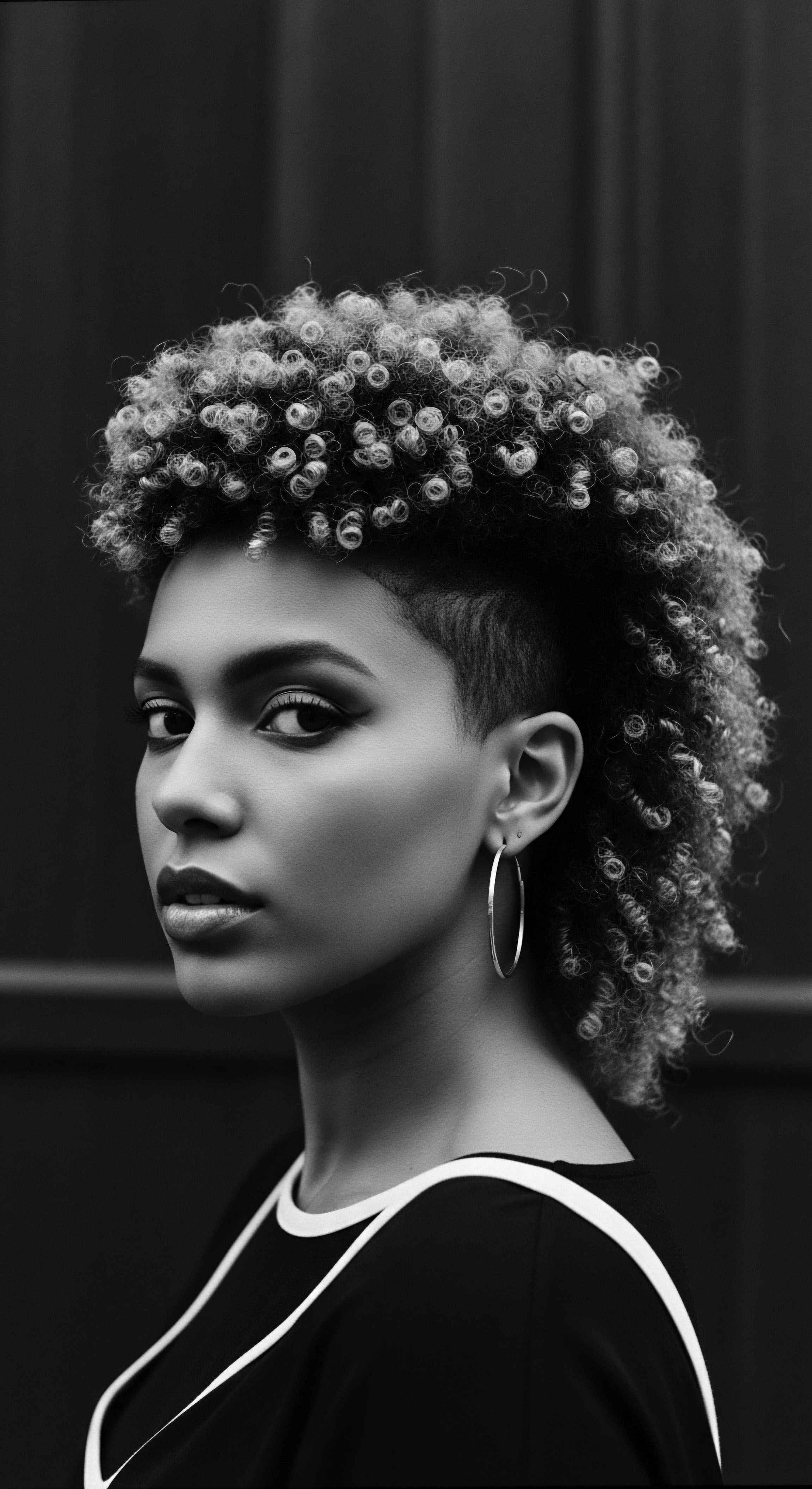
What Makes Textured Hair Unique at Its Core?
The architectural marvel of textured hair commences deep beneath the skin, within the follicle itself. Unlike straight hair, which typically emerges from a round follicle, coiled and curly strands ascend from an elliptical or oval-shaped follicle, dictating the hair’s very curvature as it grows. This inherent asymmetry, far from being a simple biological difference, holds the key to its distinct properties ❉ its propensity for volume, its glorious halo, and its sometimes delicate nature.
The molecular bonds, specifically disulfide bonds, arrange themselves along the inner and outer curves of the strand, contributing to the hair’s three-dimensional shape. This structural characteristic, known as trichoptilosis in some scientific contexts, speaks to a heritage of resilience, where hair adapts to diverse climates and environments.
For centuries, long before microscopes revealed cellular structures, communities understood these innate qualities. They observed how textured hair naturally repelled direct sunlight, offering protection to the scalp. They recognized its thirst for moisture, developing deep conditioning techniques long before the term existed.
The scientific understanding we gain today, that the very twists and turns of a strand create natural points of weakness susceptible to breakage if not cared for with reverence, mirrors an ancestral awareness of hair’s fragility and strength. Early peoples crafted practices that honored this delicate balance, intuitively knowing that a hair strand, though robust in its collective power, required gentle handling, consistent hydration, and protective styling.
Textured hair, from its elliptical follicular origin to its intricate coiling, embodies a biological heritage that demanded and inspired specific, enduring care practices.

How Did Early Societies Perceive Hair Types and Patterns?
In pre-colonial African societies, the classification of hair extended far beyond simple aesthetic preferences. Hair patterns served as a complex, visual lexicon, communicating a wealth of social, spiritual, and personal information (Afriklens, 2024). A person’s hairstyle could instantly convey their age, marital status, social standing, tribal affiliation, or even their spiritual devotion (Assendelft, n.d.). This deep system of understanding contrasts sharply with later, more simplistic Western categorizations.
For example, specific braiding patterns among the Yoruba people of Nigeria signified community roles and rites of passage, with certain styles reserved for women transitioning to adulthood (Afriklens, 2024). The Himba tribe in Namibia, with their dreadlocked styles coated in red ochre, visibly expressed their connection to the earth and their ancestors (Afriklens, 2024).
The very names given to hair textures and styles often carried historical and social weight. While modern systems like the Andre Walker hair typing system (which classifies hair from 1 to 4C based on curl pattern) offer a contemporary framework, they do not hold the profound cultural resonance of older, community-specific terminologies. Traditional names for styles, ingredients, or even the act of hair care often reflected local flora, fauna, cosmology, or specific communal events.
These terms were not arbitrary; they were born from observation, collective wisdom, and a shared understanding of hair’s place in the spiritual and social fabric of life. The language surrounding hair was, in itself, a preservation of heritage.
- Fibre Type ❉ Textured hair often possesses a flatter, ribbon-like cross-section compared to rounder, straight hair, influencing its curl pattern.
- Cuticle Layers ❉ While generally possessing more cuticle layers than straight hair, textured hair’s twists can lift these layers, making it prone to moisture loss.
- Melanin Distribution ❉ Melanin, the pigment responsible for hair color, can be distributed unevenly in textured strands, affecting strength and light reflection.
- Follicle Shape ❉ The elliptical or oval shape of the hair follicle dictates the coiling and curvature of the strand as it grows.
| Traditional Context Hair as a map of social hierarchy, age, or marital status within a tribe. |
| Modern Parallel or Scientific Observation Hair typing systems (e.g. Andre Walker) categorize curl patterns, largely for product selection. |
| Traditional Context Communal hair grooming as a practice of bonding and wisdom transfer. |
| Modern Parallel or Scientific Observation Hair stylists and salons as spaces for community and shared beauty experiences. |
| Traditional Context Specific ancestral names for styles or hair attributes, tied to cultural stories. |
| Modern Parallel or Scientific Observation Standardized scientific terminology for hair anatomy (cortex, medulla, cuticle). |
| Traditional Context The deep cultural significance of historical hair practices continues to inform contemporary self-perception and beauty standards. |
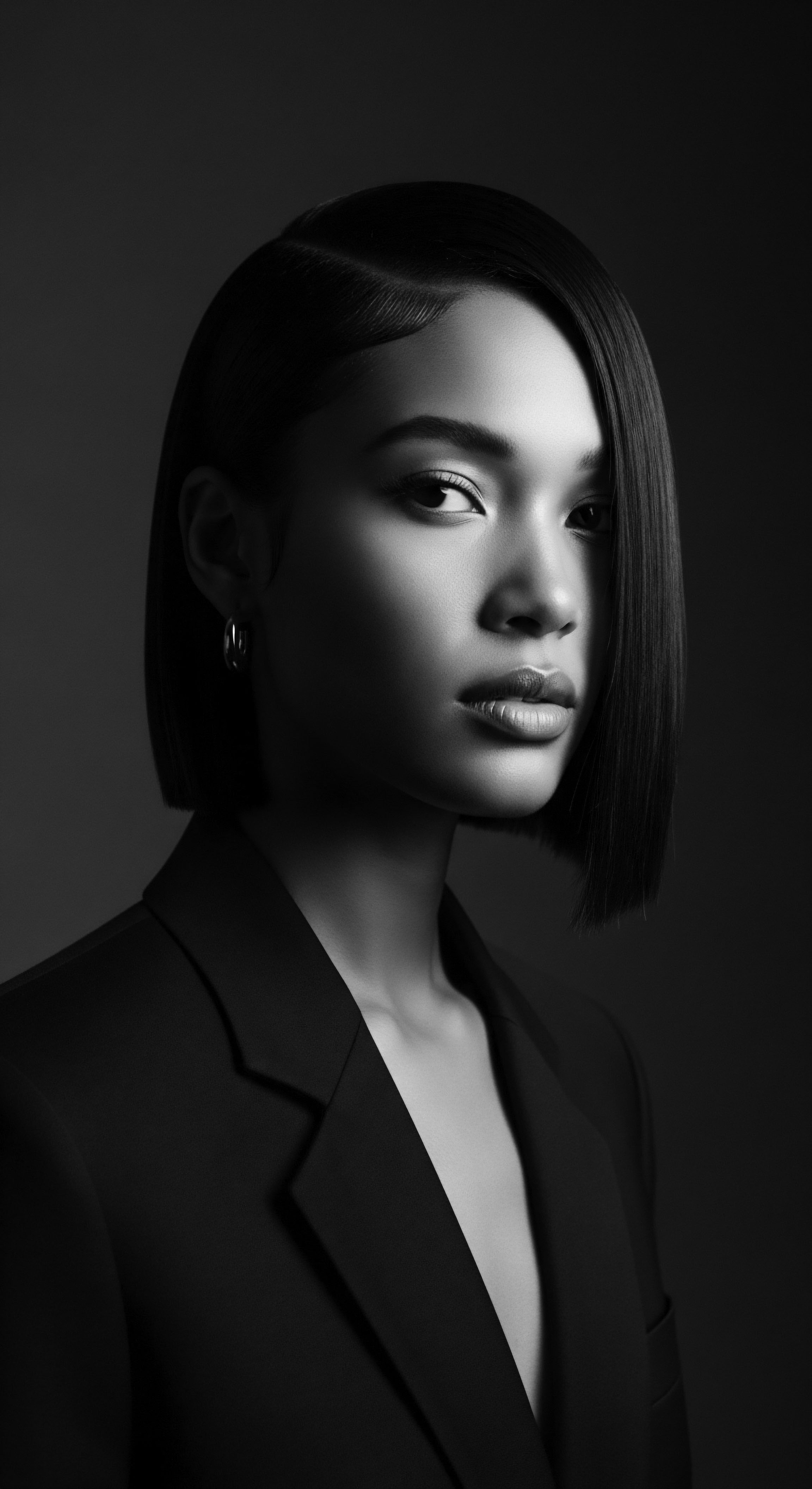
Ritual
The story of textured hair is not confined to biological structure; it breathes within the very practices that have shaped it across millennia. These practices, often passed down through generations, form a sacred ritual, a tender thread connecting the present to a vibrant past. They are the living embodiment of collective knowledge, designed to protect, adorn, and express. The art of textured hair styling is a testament to human ingenuity and an unwavering spirit, transforming strands into declarations of identity, resilience, and beauty.

How Did Ancestral Hands Craft Protection and Definition?
Protective styling, now a widely recognized concept in textured hair care, carries an ancient lineage. Long before the term ‘protective style’ entered our modern lexicon, our ancestors were masters of safeguarding their hair from the elements, minimizing manipulation, and promoting growth. Styles like braids, cornrows (often called ‘canerows’ in some Caribbean traditions), and various forms of coiling were not just aesthetic choices; they were intelligent solutions born from necessity and a deep understanding of hair’s needs (Dream Hair Care, 2023). These styles kept hair organized, reduced tangling, and protected delicate ends, preserving moisture and preventing breakage in demanding climates and active lives.
Consider the historical example of cornrows used by enslaved Africans during the transatlantic slave trade. These intricate patterns were more than styles; they were vital tools of survival and resistance. Women would braid rice seeds into their hair as a means of preserving their agricultural heritage and ensuring sustenance in a new, hostile land (BLAM UK CIC, 2022). Cornrows also served as covert maps, with specific patterns encoding escape routes or indicating safe houses along the Underground Railroad (Odele Beauty, 2024).
This remarkable historical act reveals how deeply practical and symbolic these practices were, allowing individuals to cling to their heritage and strategize for freedom even under extreme oppression. The creation of such detailed looks often took hours, transforming a utilitarian act into a communal gathering, a time for sharing stories, wisdom, and strengthening family bonds (Dream Hair Care, 2023).
The communal act of hair care, particularly braiding, transcended mere aesthetics, serving as a powerful conduit for cultural preservation and resistance across generations.
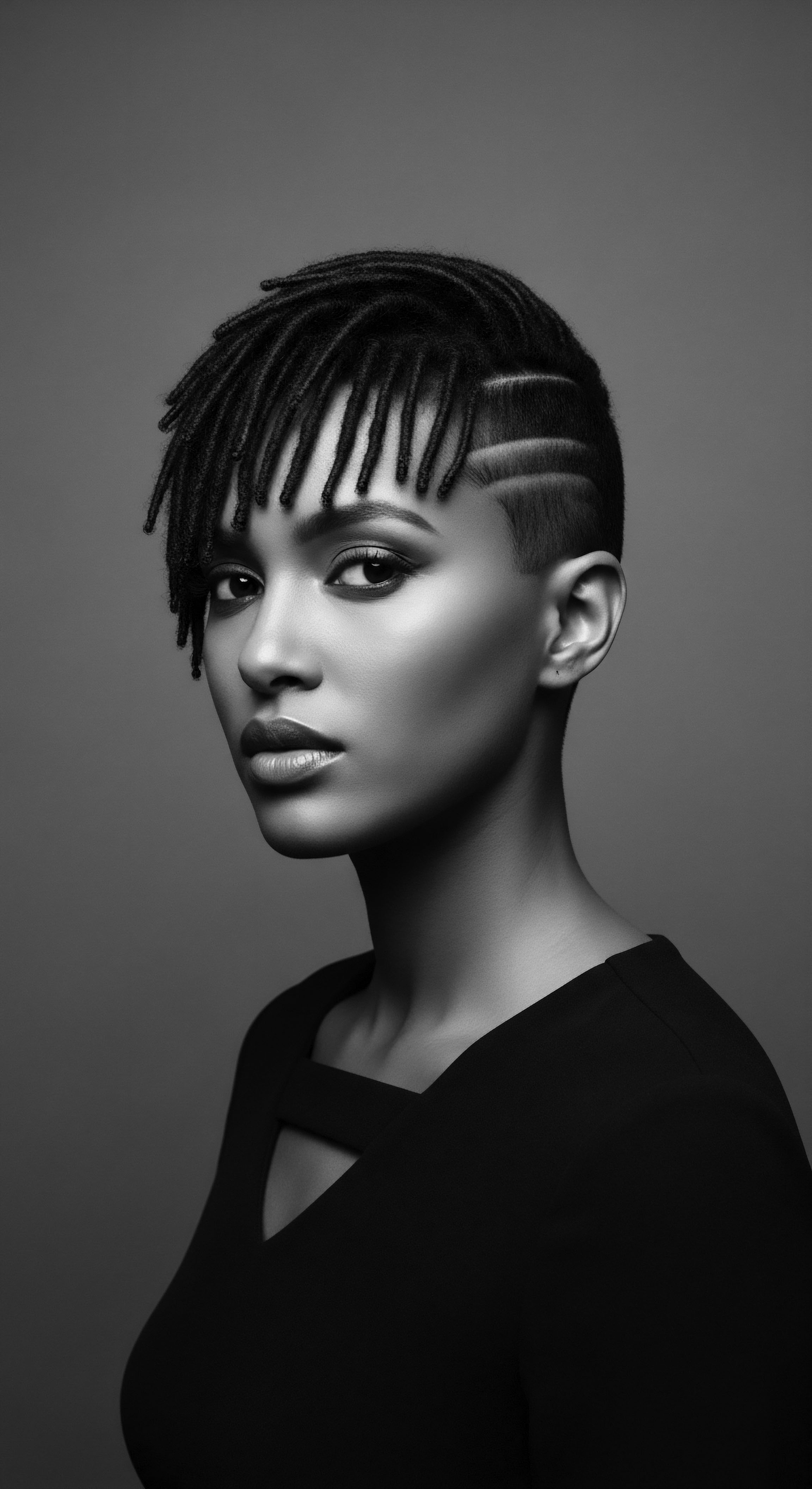
What Tools Guided Historical Hair Transformations?
The evolution of textured hair styling tools parallels the ingenuity of the cultures that developed them. From the simplest bone combs to more sophisticated instruments, these tools were designed with the unique characteristics of coiled strands in mind. Early combs, carved from wood, bone, or horn, often featured wide teeth to gently detangle without causing stress.
Adornments, too, were carefully selected, including cowrie shells, beads, and precious metals, each carrying its own layer of meaning and often signifying social standing, wealth, or spiritual connection (Dream Hair Care, 2023). The practice of adding extensions, a common element in various pre-colonial African societies, utilized organic matter or shorn hair, extending both style and protective qualities (BUALA, 2024).
The deliberate care required for textured hair led to the development of specific accessories that minimized friction and preserved styles. Head wraps, for instance, were (and remain) a ubiquitous element of styling and protection across African and diasporic communities. While often serving as practical head coverings, head wraps also carried profound cultural weight, signifying marital status, humility, or even a form of silent protest against oppressive beauty standards, as seen with the Tignon Law in Louisiana in 1786 (BUALA, 2024). These historical tools and techniques speak to a continuous, intentional tradition of care that honors the hair’s natural inclinations.
- Wooden Combs ❉ Often handcrafted with widely spaced teeth, these tools were essential for gentle detangling, preventing mechanical damage to delicate coils.
- Natural Fibres ❉ Materials such as raffia, animal hair, or plant fibres were incorporated into styles for extensions, volume, or structural support, sometimes coated with ochre.
- Beads and Shells ❉ Used not just for ornamentation, but often carrying symbolic weight, denoting status, rites of passage, or tribal affiliation.
- Head Wraps ❉ Fabric coverings that protected hair from environmental aggressors, preserved styles, and served as powerful symbols of identity and cultural expression.
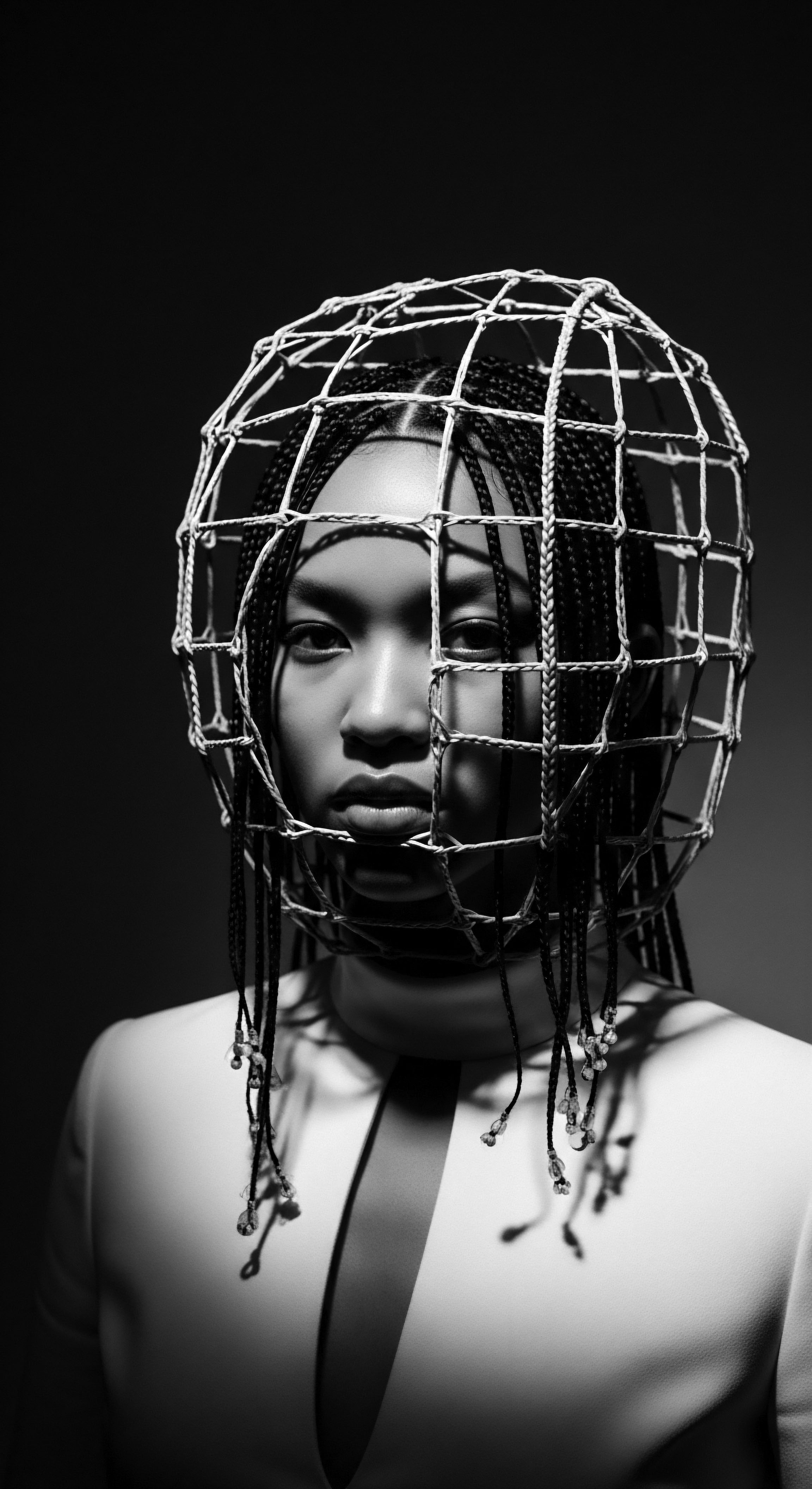
Relay
The enduring practices of textured hair care and styling represent more than mere historical artifacts; they are living traditions, a continuous relay of ancestral wisdom that shapes contemporary identity and lays pathways for future generations. This is where the profound depth of heritage truly manifests, allowing us to perceive how deeply intertwined personal expression is with collective memory and cultural resilience. Hair becomes a medium through which historical struggles and triumphs are communicated, understood, and ultimately, celebrated.
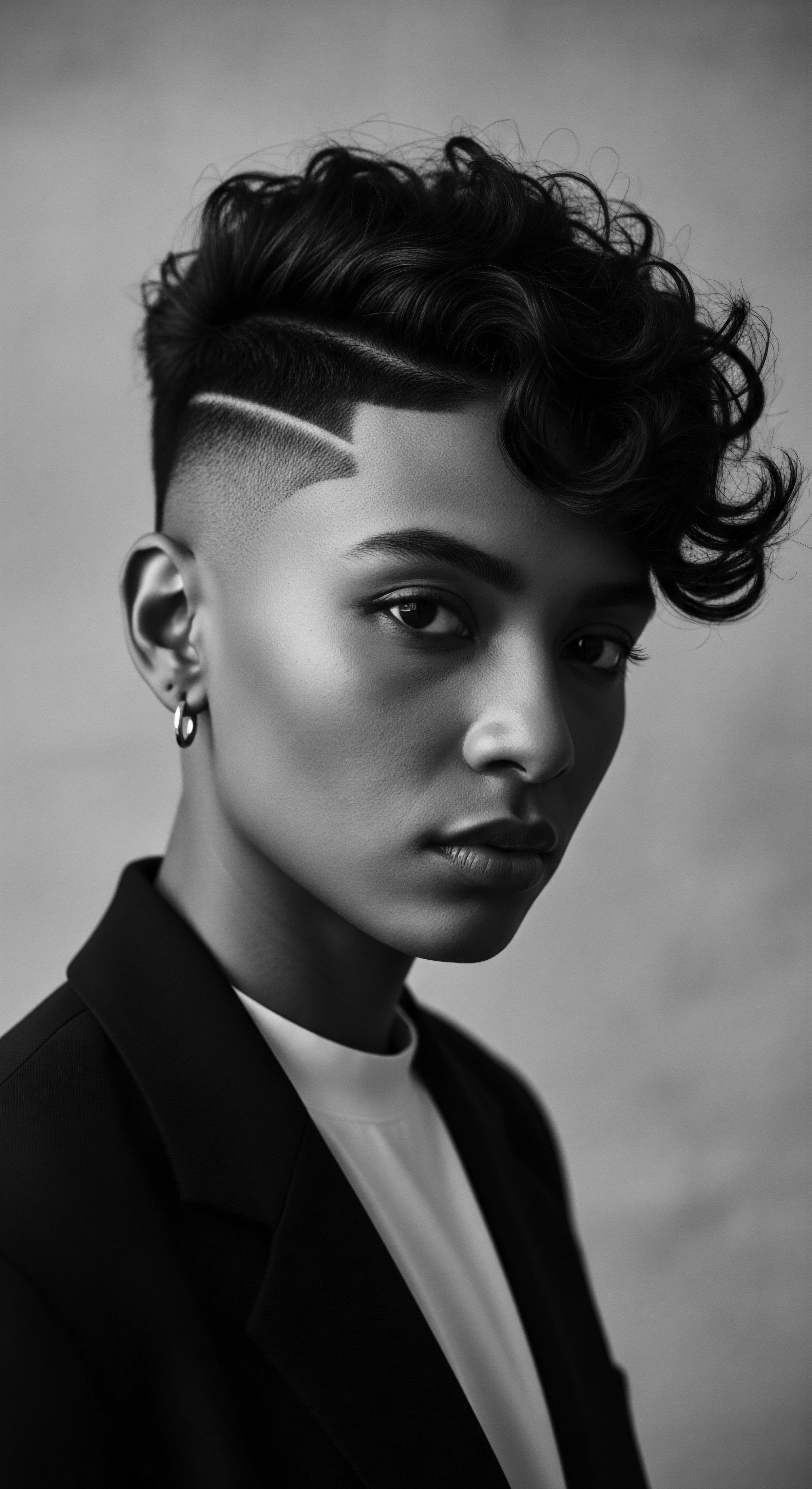
How Does Textured Hair History Inform Identity and Resistance?
The journey of textured hair through history is inextricably linked with experiences of cultural preservation and resistance, particularly within Black and mixed-race communities. During the transatlantic slave trade, the forced shaving of hair upon capture was a deliberate act of dehumanization, an attempt to strip individuals of their identity and sever their ties to homeland and heritage (BLAM UK CIC, 2022; Just Afro, 2024). Yet, against this backdrop of oppression, traditional hair practices became powerful forms of defiance. Enslaved Africans adapted and maintained elements of their hair heritage, passing down techniques and knowledge in secret, using hair as a covert communication system and a symbol of unwavering selfhood (BLAM UK CIC, 2022; Odele Beauty, 2024).
The resilience of these practices continued through generations, even as Eurocentric beauty standards gained dominance, pushing chemically straightened hair as a societal norm (BLAM UK CIC, 2022). The mid-20th century saw a resurgence of natural hairstyles, notably the Afro during the Black Power Movement, as a powerful symbol of pride, self-acceptance, and resistance against oppression (Just Afro, 2024). This period marked a conscious reclamation of hair as a political and cultural statement, directly referencing ancestral aesthetics and challenging imposed norms. This historical continuity demonstrates that hair is not a static marker; it is a dynamic testament to survival, creativity, and identity.
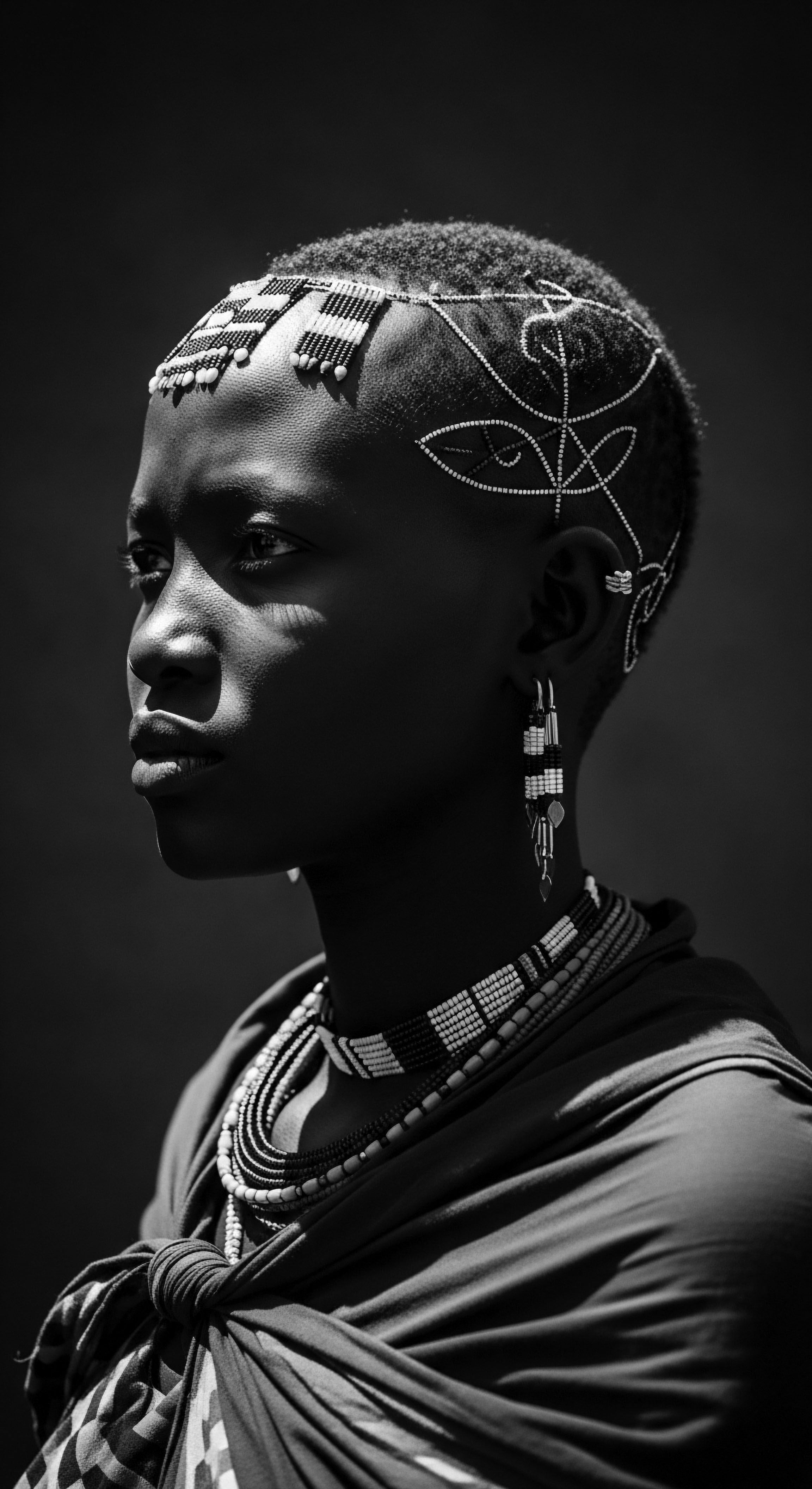
What Role Does Hair Play in Ancestral Wellness Philosophies?
Beyond external appearance, historical textured hair practices often aligned with holistic wellness philosophies that viewed the body, mind, and spirit as interconnected. In many traditional African societies, hair was considered sacred, often believed to be a conduit for spiritual energy and a connection to ancestors and deities (Afriklens, 2024). The head, being the most elevated part of the body, was revered as a portal for spirits, making hair care a spiritual act as much as a physical one (Know Your Hairitage, n.d.).
This perspective informed comprehensive care rituals that extended beyond superficial conditioning. Ingredients sourced from local environments, such as shea butter, argan oil, and various plant extracts, were used not only for their conditioning properties but also for their perceived energetic or protective qualities. These ancient ingredients and their application rituals represent a profound ancestral understanding of the symbiotic relationship between human health and the natural world (Dream Hair Care, 2023).
The thoughtful selection of ingredients, the mindful application, and the communal setting of hair care sessions all contributed to a sense of wellbeing that nourished the individual and reinforced community bonds. This holistic approach to hair care reminds us that true wellness is a return to fundamental practices rooted in reverence for both self and the surrounding environment.
Connecting with textured hair heritage means recognizing ancestral wisdom as a guiding force in contemporary self-expression and wellbeing.

Reflection
The journey through the intricate world of textured hair heritage reveals a profound truth ❉ a strand is never merely a strand. It holds within its very structure and the practices that tend to it, the echoes of ingenuity, the quiet strength of survival, and the radiant expression of cultural continuity. From the elliptical follicle to the artful braid, each aspect tells a story of adaptation, defiance, and beauty. This is the enduring spirit of Roothea’s ‘Soul of a Strand’ – a recognition that textured hair is a living archive, a repository of ancestral knowledge that continues to guide, inspire, and define.
The connection between historical textured hair practices and cultural heritage is not a static lesson from a distant past; it is a vibrant, breathing presence that shapes the present and molds the future. It is a call to honor the hands that braided messages of freedom, the rituals that grounded communities, and the resilience that ensured cultural survival. In every coil and twist, in every carefully chosen product and practiced technique, there is an opportunity to touch a piece of history, to affirm identity, and to carry forward a legacy that is both deeply personal and universally resonant. The power held within textured hair is a testament to the human spirit’s capacity for innovation, for resistance, and for finding beauty in authenticity, truly making each strand a keeper of the soul.

References
- Afriklens. (2024). African Hairstyles ❉ Cultural Significance and Legacy. Retrieved from .
- Assendelft. (n.d.). Pre-Colonial African Hairstyles ❉ A Journey Through Time and Culture. Retrieved from .
- BLAM UK CIC. (2022, September 15). The History of Black Hair. Retrieved from .
- Dream Hair Care LLC. (2023, October 26). The History and Cultural Significance of Braiding. Retrieved from .
- BUALA. (2024, February 23). Hair as Freedom. Retrieved from .
- Just Afro. (2024, March 28). The Artist. Retrieved from .
- Know Your Hairitage. (n.d.). African Culture. Retrieved from .
- Odele Beauty. (2024, January 16). A History Lesson On Hair Braiding. Retrieved from .
